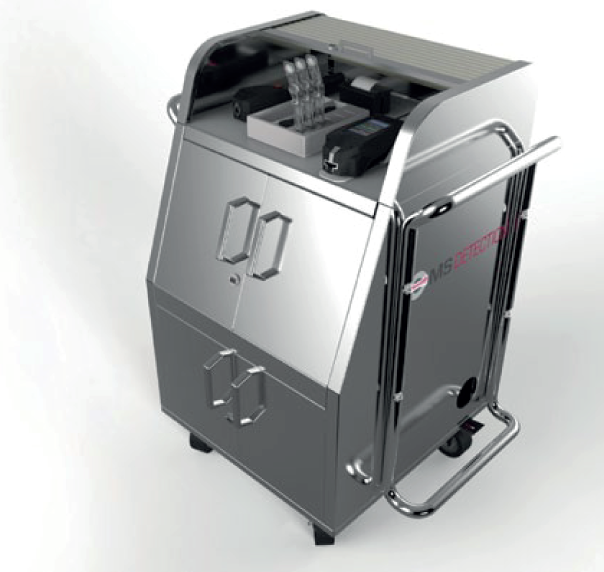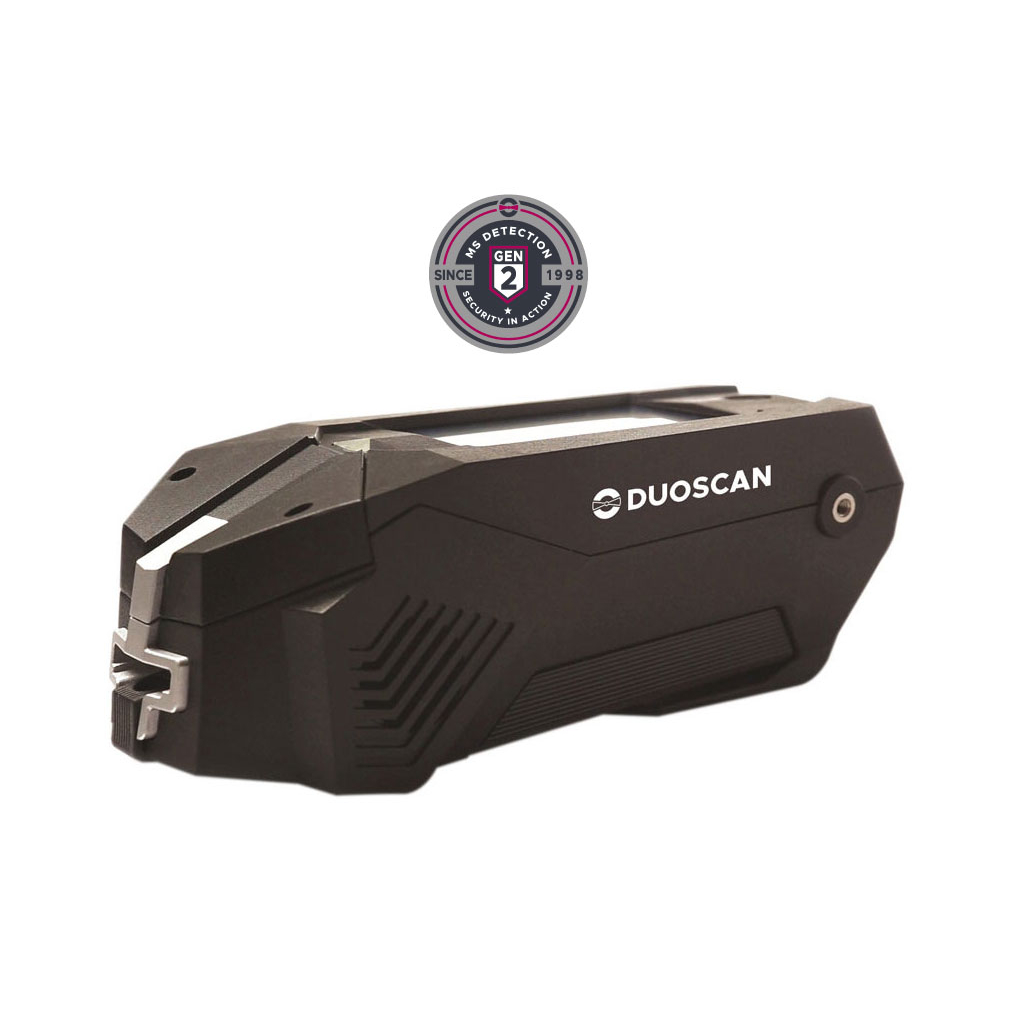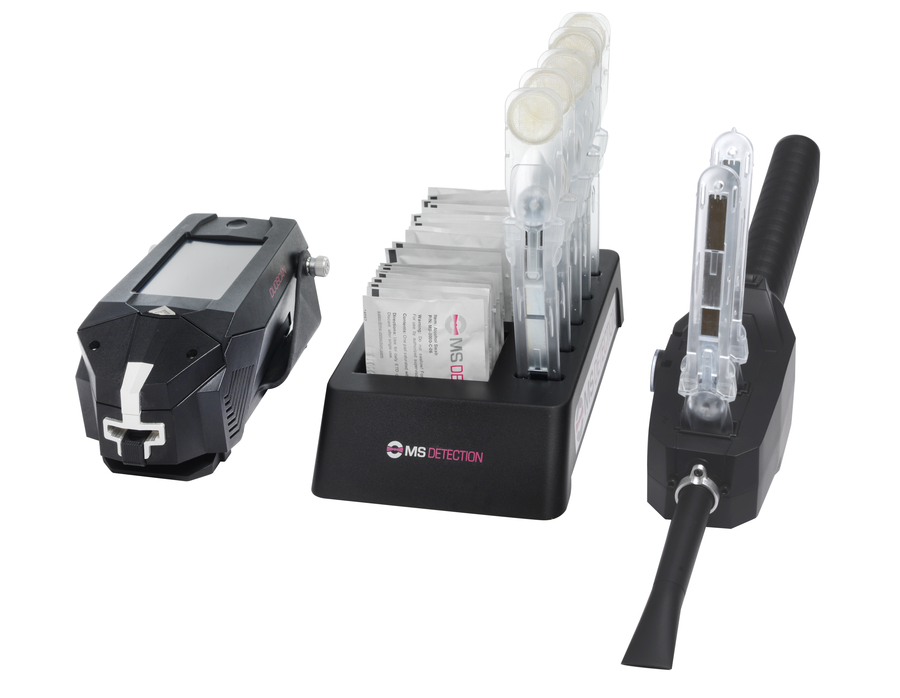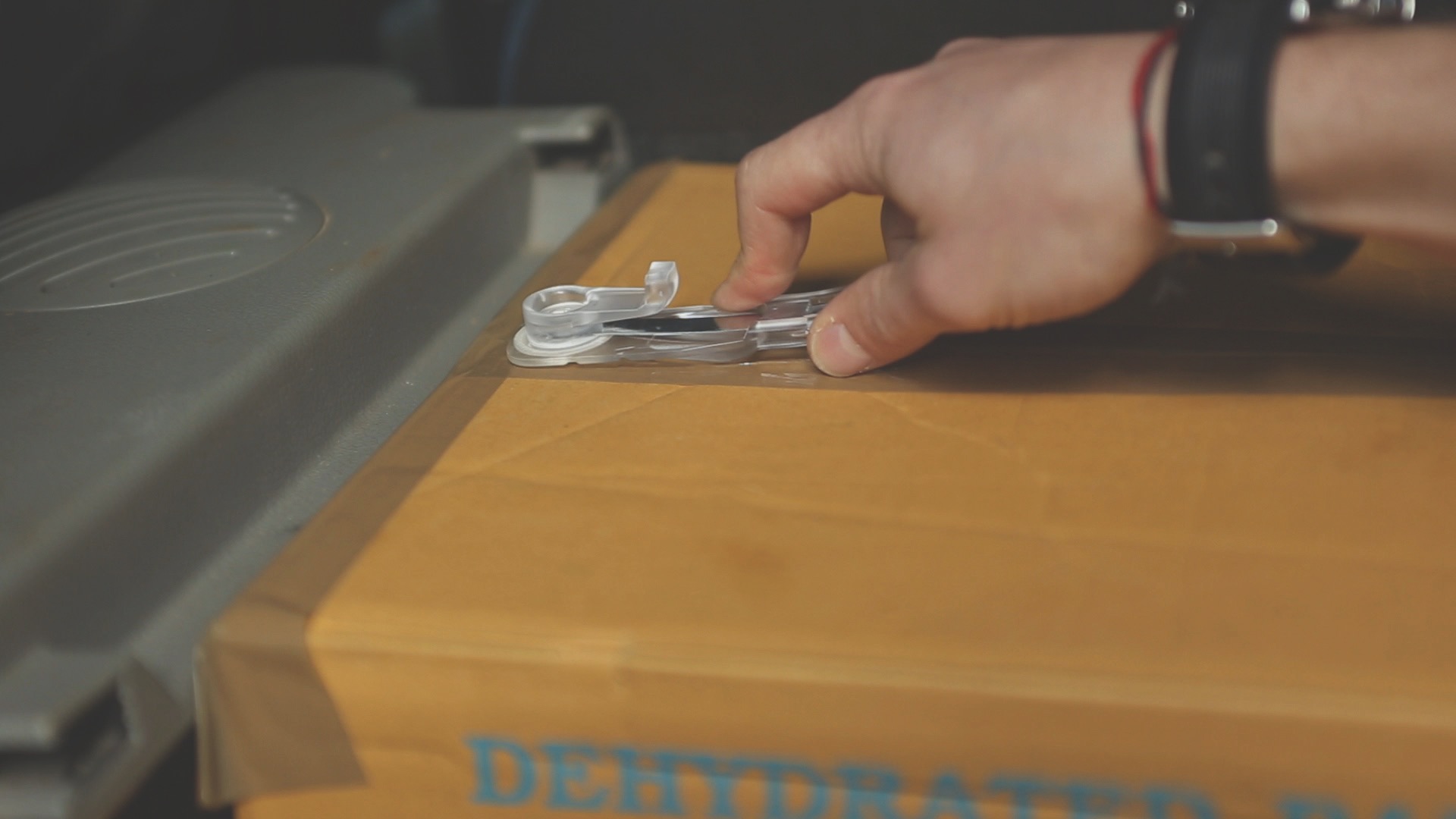DUOSCAN Desktop – Stationary detector of trace amounts of explosives and drugs
● HF-QCM nanosensor technology
● Light and handy (850 g with battery)
● No radioactive source
● Fast warm-up time
● Automatic calibration
● Fast cleaning
● Easy to use
● Low maintenance costs
The stationary detector of explosives and drugs DUOSCAN is distinguished by the award-winning HF-QCM nanosensor technology. The latest technology of HF-QCM nanosensors provides the ability to identify all hazards, including peroxide materials, nitrates and synthetic explosives. The stationary DUOSCAN detector will prove itself in the case of improvised explosives. The DUOSCAN detector is also great for dealing with illegal, psychoactive drugs, including synthetic opioids.
The stationary detector of explosives and drugs DUOSCAN is extremely easy and cheap to maintain, and the very durable housing protects the device against mechanical damage. DUOSCAN has been designed for difficult working conditions, in situations where decisions need to be made quickly, therefore it is characterized by intuitive operation and automatic calibration. The simple and time-saving method of cleaning the DUOSCAN detector is its additional advantage.
| Technology | Quartz Microbalance (HF-QCM) No carrier gas, no radioactive sources |
|---|---|
| Sampling modes | Solid particles, Particulate vapors, Vapors |
| Solid particles | Trace sampling with cost-effective sampling swabs |
| Particulate vapors | Vapor sampling with a portable and battery operated steam sampler; supplied with two types of sampling probes and a charger |
| Detected explosives | Military and plastic explosives, including: TNT, Tetryl, RDX, C4, PETN, Semtex, HMX, Detasheet, Nitroglycerin and others, Nitrate-based explosives, including: ammonium nitrate, urea nitrate and others, Peroxide-based explosives, including: TATP, HMTD and others, Programmed hazardous substances depend on the detector version and the regulatory body, Propellants and taggants including: Black and smokeless powder, EGDN and others |
| Tenderness | * Particles: low nanogram (ng) range * Pairs: low range parts of a billion (ppb) |
| False alarm level | Less than 2% |
| Time of analysis | 7-15 sec. or less |
| Display | 3.5 ”high resolution color touch screen |
| Printer | Optional printout of results using a remote printer. |
| Alarm method | Configurable audible and on-screen alarm |
| Alarm type | Audible and visual with substance identification |
| Boot time | Less than 2 minutes |
| Language | Polish, English, French, Spanish, Italian, Portuguese, Russian, Chinese, Korean, Japanese, Arabic and more |
| Data storage | Unlimited data logging including date, time, analysis results and system status |
| Data transfer | Micro USB 2.0. Optional Bluetooth and / or Wi-Fi |
| Rated voltage | 100-240V AC, 50-60Hz |
| Battery | 12V Li-ion battery, 6 to 8 hours of use in the field Possible replacement during operation |
| Temperature | -20 ° C to + 55 ° C (-4 ° F to + 131 ° F) |
| Height | Up to 4,500 m (15,000 ft) |
| Weight | 850 grams (1.87 lbs) with the battery |
| Dimensions WxDxH | (L x W x H): 19.75 x 8.89 x 7.05 cm (7.78 "x 3.50" x 2.78 ") |
| Suitcase | Supplied with a sturdy MILSPEC case |
| Security | No hazardous parts and tamper-proof housing |
| Certification | CE mark, EMC and FCC certification Manufacturing standards ISO 9001: 2015 |
| Cart | Optional adjustable workstation with wheels and lockable cabinet. |
| Humidity | Less than 95% non-condensing |
| Drugs detected | Additional drugs according to the Extensible Threat Library, Heroin, cocaine, amphetamine, methamphetamine, ketamine, MDA, THC, LSD, ecstasy and others *, Programmed hazardous substances depend on the detector version and the regulatory body, Synthetic opioids: Fentanyl, Carfentanyl, W-18 and others |
|
|






